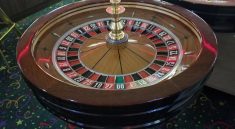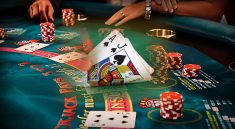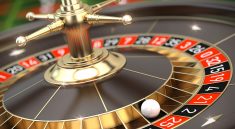Betting odds are always related to probability (or should be, if it’s a fair game). Suppose you were playing a game where you flip a coin. You put some money down and bet on heads, then you flip the coin. If it comes up heads, you should double your money, because it’s a 50% chance of coming up heads. Someone else is betting tails, he’s betting the same amount. So it’s fair, nobody has an advantage. Over many flips you should come out just the same, winning as often as you lose. Considering this, www.asikqq.id is a really great resource that you should check out in order to learn more about the odds in the game of roulette.

If you were rolling dice (a single die) and you bet 5, you should get six times your bet because there is a 1 in 6 chance of any particular number coming up. The reward matches the odds.
So now suppose you had a wheel that had an equal number of red and black spaces. You are betting on either red or black, to double your money. The odds would be even. You would win as often as you lost, so over time you would neither gain nor lose. Statistically, you would stay the same.
Well now suppose that there are 18 red, 18 black, and one GREEN space. Now when you bet on red or black, you have a slightly less than even chance of winning. 1 in 37 times the ball is going to land on the green space, and you’ll lose whether you bet on red or black. French roulette has one green space. American roulette has two green spaces! So the odds are slightly in favor of the house.
Now let’s forget the green spaces for a minute, suppose they weren’t there. You can bet on red or black, and if your color comes up you double your money, because there’s a 50% chance of that happening. You can bet on a particular number and get 36 times your money if you win because there’s a 1/36 chance of the ball landing on that space. You can bet on a line or a column, and if any of those come up you win, and the odds are similar. You can bet on even or odd, just like red or black.





